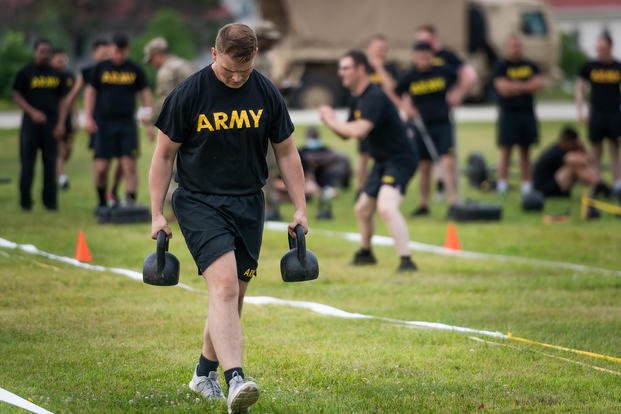Army’s Physical Training Uniform Update: No Replacement Planned
Army’s Physical Training Uniform: No Changes Ahead
The world of military uniforms is no stranger to change. Whether it’s swapping out camo patterns or updating combat boots, the Army continuously seeks to adapt and evolve. But when it comes to the Army’s Physical Training Uniform (PTU), the latest news signals a big “not now.” That’s right, folks! The Army isn’t planning to replace the PTU anytime soon. You might be scratching your head and wondering what this means for soldiers on the ground. In this article, we’ll delve into the details of this decision, its implications for servicemen and women, and what it means for the future of physical training in the Army.
What’s the Big Deal About PTUs?
Imagine this: you’re gearing up for a morning run with your buddies. The sun is just peeking over the horizon, and you feel that invigorating energy flow through your body. Now, what do you wear? That’s right—a trusty physical training uniform. It’s more than just a suit of clothes; it’s a symbol of camaraderie and readiness. Physical Training Uniforms play a crucial role in the daily lives of soldiers, providing comfort, durability, and a sense of pride as they sweat it out or participate in team-building exercises.
But as trends in athletic wear and functionality evolve, should the Army keep up with them? Many soldiers have been clamoring for an update, envisioning uniforms that are not just functional but also align with today’s fitness aesthetics. However, the Army’s top enlisted leader has recently thrown a wet blanket on those aspirations.
The Announcement: A Refreshing No
In a recent briefing, Army Sergeant Major of the Army Michael Grinston conveyed the Army’s stance on the PTU—there are no plans for replacement or significant changes. Grinston pointed out that while the Army has received feedback about the PTU, the decision is to stick with what’s currently in place for the foreseeable future.
You might be wondering: “What gives?” After all, when a majority of uniformed personnel share their thoughts, it usually leads to change. Yet, in this case, the leadership appears to believe that the current PTU is serving its purpose well.
Why Are Soldiers Yearning for Change?
So, why does the desire for an updated uniform linger among the ranks? It’s a mixed bag of factors:
-
Comfort and Fit: Many soldiers report that the current PTU could use some tweaks in terms of style and fit. A uniform that allows free movement can make or break an early morning run.
-
Modern Fabrics: With the wide variety of high-performance fabrics available today, it’s no surprise that many soldiers envision PTUs made from materials that wick away sweat and regulate temperature better.
-
Inclusivity: As the Army embraces diversity and inclusion, some suggest that current PTUs could do a better job of accommodating various body types and preferences.
These concerns highlight the fine line the Army walks when it comes to uniformity and personal comfort. A uniform isn’t just a garment; it embodies the values and ethics the Army stands for.
Delving Into the Reasoning Behind the No Change Decision
You might be thinking, “Isn’t feedback important?” Of course, it is! However, Grinston emphasized several reasons for sticking with the current PTU:
1. Operational Consistency
The Army values consistency across its ranks. When every soldier dons the same uniform, it fosters a sense of unity and professionalism. Any change can lead to a chaotic transition period, and as they say, “If it isn’t broken, don’t fix it.”
2. Financial Implications
Changing a uniform is not just about design; it involves considerable financial implications. From manufacturing to distribution, switching to a new PTU could cost taxpayers a pretty penny. In times where budgets are continuously scrutinized, sticking with the current uniform makes economic sense.
3. Historical Value
Every uniform tells a story, and the PTU is no exception. It has a rich history tied to soldiers who have donned it on runs, during workouts, and in camaraderie-building activities. Retaining the uniform pays homage to the experiences and tradition that have shaped the Army.
4. Focus on Performance
At the end of the day, soldier performance matters most. Grinston highlighted that the current physical training program is effective, and uniforms should enhance soldier performance—not detract from it. The Army’s focus remains on improving fitness standards, not changing fashion statements.
Soldier Reactions: Embracing Reality or Holding Out Hope?
With this announcement hitting home, reactions among soldiers are mixed. Some soldiers are glad to have clarity on the issue; they see the value in maintaining consistency and making the best out of what they currently have. Others, however, harbor disappointment. For many, the PTU represents a blending of practicality and self-expression, and they feel somewhat stifled by the lack of options.
Finding a Silver Lining
Even if there’s no replacement planned, soldiers can still find ways to enhance their physical training experience:
-
Accessorizing Smartly: Personal touches with accessories like headbands, shoes, or fitness watches can add flair to the existing uniform.
-
Focusing on Training Itself: Building relationships within their units and pushing each other during workouts can create a sense of community that transcends uniform aesthetics.
-
Proposing Minor Adjustments: While a full-scale replacement might be off the table, suggesting minor changes through established feedback channels could still have impact.
What Lies Ahead for the PTU?
So, what does the future hold for the Army’s Physical Training Uniform? While the current stance is clear, change is often a gradual process. Soldiers will continue wearing their PTUs with pride while the discussions simmer on what future designs should be.
Here are some key takeaways about the potential discussions surrounding PTU revisions:
-
Increased Involvement: Soldiers may seek greater involvement in future uniform feedback processes to ensure their voices are heard.
-
Pilot Programs: The Army could initiate pilot programs that test minor updates to the current PTU, gauging soldier satisfaction before implementing any final decisions.
-
Keeping an Ear to the Ground: Leadership’s decisions might evolve in response to changing cultures, technologies, or challenges, meaning patience and vigilance could pay off.
Conclusion
In a world where trends shift at the speed of light, it’s surprising to see the Army standing firm on its Physical Training Uniform. While the announcement may not resonate with everyone, it emphasizes the values of consistency, operational focus, and tradition over fleeting trends. So, soldiers, whether you are sprucing up your PTU with accessories or focusing on your next workout, remember that the spirit of camaraderie and dedication will always shine brighter than any uniform itself.
FAQs
1. Why isn’t the Army changing the PTU?
The Army leadership believes the current PTU effectively serves its purpose, maintaining operational consistency and historical value.
2. What are soldiers hoping to see in a new PTU?
Many soldiers seek improved comfort, modern fabrics, and inclusivity in design and fitting options.
3. How does the current PTU affect soldier performance?
A familiar and functional uniform can enhance soldier morale and focus during physical training exercises.
4. Can minor changes to the PTU still be suggested?
Yes, soldiers can propose minor adjustments through established feedback channels.
5. What can soldiers do to adapt to the existing PTU?
Soldiers can personalize their uniforms with accessories and focus on fostering unit camaraderie during workouts.






